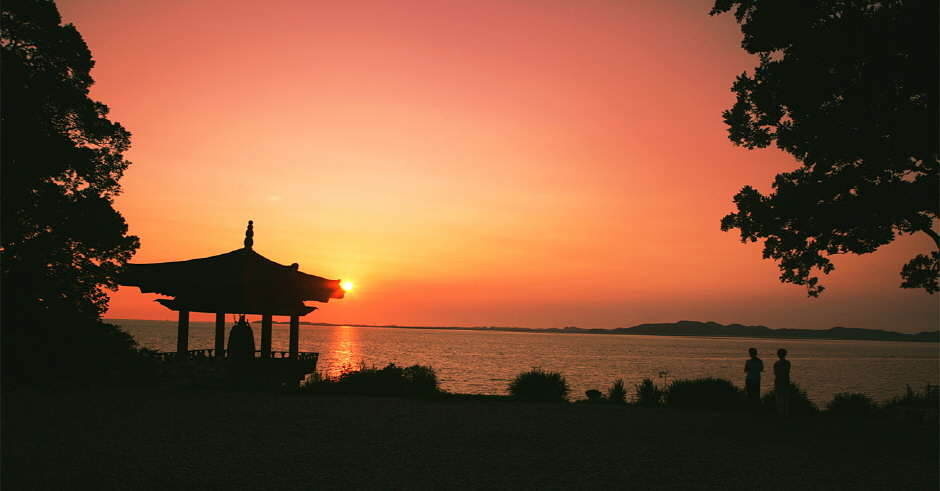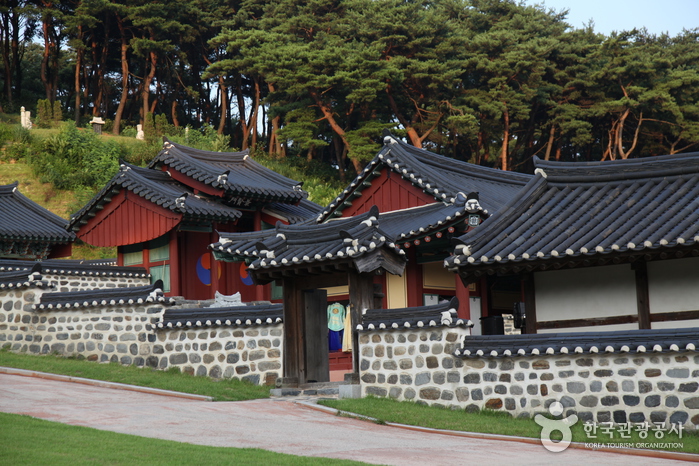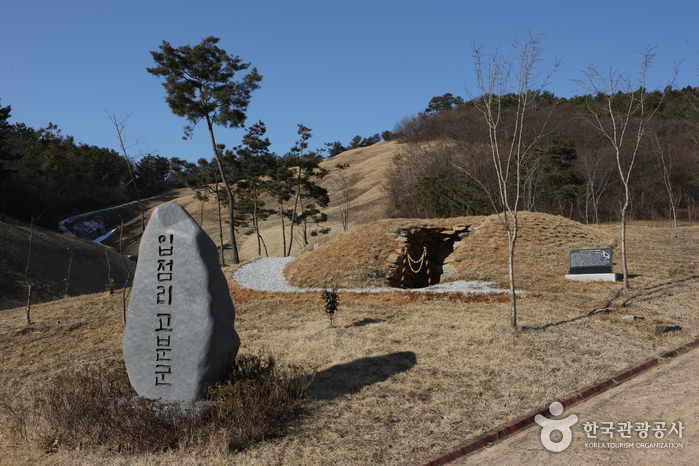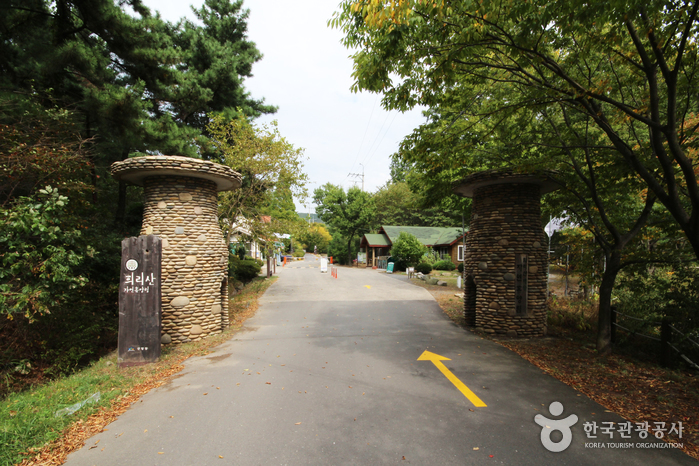Hansan Ramie Fabric Cultural Festival (한산모시문화제)
12.6Km 2025-07-11
1089 Chungjeol-ro, Seocheon-gun, Chungcheongnam-do
+82-41-957-9045
Ramie fabric is a traditional Korean cloth with good ventilation, making it the fabric of choice for summer clothing. Hansan’s ramie is used to make high-end clothing due to its delicate and elegant texture. It is also an eco-friendly fiber that is extracted from ramie grass and weaved into a loom. Hansan’s ramie weaving was registered as a UNESCO Intangible Cultural Heritage in 2011 in recognition of its unique production technology as well as its ability to strengthen community solidarity in the process. At the Hansan Ramie Fabric Cultural Festival, visitors can participate in the “Ramie School” program and learn the weaving process. Other attractions include Gilssam Nori, a ramie-weaving work, and a fashion show featuring clothes made from Hansan ramie is a highlight not to be missed.
◎ Tip
During the festival, a free shuttle bus operates from the Hansan Mosi Hall parking lot to the festival venue.
Manghaesa Temple (망해사)
13.1Km 2024-04-07
94, Simpo 10-gil, Gimje-si, Jeonbuk-do
+82-63-540-3324
Manghaesa Temple is located at the edge of the Gimje Plains before the sea. The temple stands at the summit of Jinbongsan Mountain. The temple was named for the view of the ocean and the fields of rice. The temple was established by the great monk Buseol Geosa during the 2nd year of King Uija of Baekje (AD 642). Years later, Dobeopsa (a Chinese monk from the Tang dynasty) renovated the temple. The temple was altered again during the reign of King Injo of the Joseon dynasty when the great monk Jinmuk Daesa built Nakseojeon Hall in 1589. Bogwangjeon Hall and Chilseonggak Pavilion were built much later in 1933. Manghaesa Temple is unique in that it is the only temple where the distant horizon is visible over both land and sea. Nearby attractions include a walking path through a field of reeds by Mangyeonggang River and views of the sunset over the sea.
Munheon Hotel [Korea Quality]문헌전통호텔[한국관광 품질인증]
13.3Km 2023-12-04
49-1 , Seowon-ro 172beon-gil, Seocheon-gun, Chungcheongnam-do
+82-41-953-5896
Munheon Hotel is a hanok stay in Seocheon, Chungcheongnam-do. Wooden floors and beams, earthen walls and stone footings, ondol-heated floors and wooden patios - these are the distinctive features that make hanok so deeply unique. All four buildings in the hotel have these features; each has two comfortable guest rooms, and it’s also possible to rent the entire hotel for groups or conferences.
Munheonseowon Confucian Academy (문헌서원)
13.4Km 2025-10-23
66 Seowon-ro 172beon-gil, Gisan-myeon, Seocheon-gun, Chungcheongnam-do
+82-41-953-5895
Munheonseowon Confucian Academy was established to pay tribute to the memory of Lee Gok (1298-1351) and Lee Saek (1328-1396) who were well-respected for their writings and character. The school was originally built in 1594, but was burnt down during the Imjin War (1592-1598). It was rebuilt in 1610 and became a legislated private institute in 1611.
The academy consists of an educational area and a shrine. Mortuary tablets of five Confucian scholars including Lee Jong-hak, Lee Ja, Lee Gae as well as Lee Gok and Lee Saek were enshrined at the school.
Iksan Ipjeomni Ancient Tombs (익산 입점리 고분)
13.9Km 2024-04-07
80, Ipjeomgobun-gil, Iksan-si, Jeonbuk-do
+82-63-859-5875
The Iksan Ipjeomni Ancient Tombs are a group of ancient Baekje-era tumuli located 100 meters above sea level on the northeast brow of Chilmokjae Hill in Ipjeom-ri, Iksan-si, Jeollabuk-do. The burial ground covers an area of more than 18,520 square meters and is officially listed as Historical Site No. 347. To date, a total of eight tumuli have been excavated, all of which are chamber tombs.
Surprisingly enough, the tombs were first discovered in 1986 by a high school student. While digging for arrowroot, a young man from a local high school found some pieces of gold that resembled a hat. He quickly notified the authorities and it was soon discovered that the pieces of gold were in fact valuable ancient artifacts. An emergency excavation was conducted and the eight tumuli were uncovered, but unfortunately all of the tumuli except Tomb No. 1 had been severely damaged. Tomb No. 1, which is still in relatively good condition, boasts an entrance measuring an impressive 16 meters in x_height and 2 meters in x_width.
Inside the tombs archaeologists found valuable relics from the Baekje dynasty including earthenware, jewelry (a gilt-bronze hat, gold earrings, glass beads, etc.), harnesses and ironware. Given the shapes and the types of the pieces found, historians estimate that the tumuli were built in the 5th century. Since the gilt-bronze hat is similar in shape to those found in Japan, experts believe that there was an active exchange between the Baekje people and the people of Japan.
Huirisan Pine Tree Recreational Forest (국립 희리산해송자연휴양림)
16.4Km 2022-07-22
+82-41-953-2230
Surrounded by majestic pine trees, Huirisan Mountain boasts an outstanding landscape; there is a reservoir at the foot of the mountain. Upon climbing to the top of the mountain, visitor can overlook the scenic West Sea. There are also numerous attractions near Huirisan: Chunjangdae Beach, Geumgang River Banks, and Hansan Mosi Town (“Mosi” referring to “Ramie,” the predominant fabric used for traditional Korean clothing)
The top of the mountain (329m in x_height) is called Munsubong (or Munsu Peak). To the northwest of the Huirisan Pine Tree Recreational Forest is Saindae. Legend goes that four generals used to play there. Indeed, there is a cliff (140m in x_height) just below Saindae where they were believed to do chin-ups. Naturally, people call the area Teokgeolijang (Chin-Up Spot). Traces of Munsusa Temple still remain below Munsubong although it was said to have been destroyed by a huge number of bedbugs. 500m from Munsubong to the south, horse riding trails of the four generals are dotted along the ridge; Malttongbawi (Horse Dung Rock), resembling horse droppings, is 500m from the peak to the southeast.
Below Munsubong are four large peaks where the four generals lived and 100 small rocks beneath them that were home to low ranking men commanded by the generals. Because of their unique shapes, those rocks form a scenic sight while hiking in Huirisan.
Bieung Mapaji Trail (비응 마파지길)
18.2Km 2024-04-06
1331 Oehang-ro, Gunsan-si, Jeonbuk-do
Bieung Mapaji Trail is a deck walkway along the coast of Biungdo Island. "Mapaji" means a place where the maparam (south wind) blows in Korean, and visitors can enjoy a refreshing walk while feeling the cool breeze from the sea. While strolling along the coastal scenery, visitors come across observation decks. From these decks, they can enjoy panoramic views of Bieung Port and the expansive scenery of the Seohae Sea.
Bieung Port (비응항)
19.0Km 2024-04-07
74-11 , Bieungnam-ro, Gunsan-si, Jeonbuk-do
+82-63-454-4000
Bieung Port is the starting point of Saemangeum Embankment which is at the entrance of the Saemangeum tourist area. Bieung Port was once closed due to the excess of soil sedimentation after the construction of Geumgang Estuary seawall. In addition, when the shores were closed off with the Saemangeum Embankment reconstruction project, a new port was in need and thus Bieung Port was repaired and reopened along with two other ports. Bieung Port in particular was constructed as a multi-functioning fisheries port so that it may be incorporated with the nearby attractions in the tourism business.
Iksan Sungnimsa Temple (숭림사(익산))
19.5Km 2024-04-07
495-57, Baekje-ro, Iksan-si, Jeonbuk-do
+82-53-862-6394
Sungnimsa Temple is one of the major temples in Iksan under Geumsansa Temple and was believed by some to have been built by monk Jinpyo Yulsa during the reign of King Gyeongdeok (742-764) during the Silla period. Others believe that the temple was established during the first year of King Chungmok of the Goryeo dynasty in 1345. Sungnimsa Temple was named in honor of great monk Bodhi-Dharma, who practiced seated Zen meditation for nine years at Sorimsa Temple located deep inside Sungsan Mountain in China. The temple was burnt down during the Imjin War (1592-1598), leaving only Bogwangjeon Hall. Bits and pieces of the temple were later restored in 1697, 1819, and 1892.
Wonkwang University Hospital (원광대학교병원)
19.5Km 2025-10-23
895 Muwang-ro, Iksan-si, Jeonbuk-do (54538)
WONKWNAG UNIVERSITY HOSPTIAL leads the advancement of medical care in Jeollabuk-do by centering on excellent medical personnel and introducing the latest medical equipment.
We are the first in the Jeonbuk State to receive the KAHF (Korean Accreditation Program for Hospitals serving Foreign Patients). Our hospital is a tertiary hospital equipped with a Jeonbuk Regional Cardiocerebrovascular Disease Center, Trauma Center, Regional Emergency Medical Center, and a multi-person hyperbaric oxygen therapy chamber.
As a renowned cancer specialist, we have consistently attained the highest level, Grade 1, in all four major cancer care assessments (colon cancer and stomach cancer for 7 consecutive years, and breast cancer and lung cancer for 6 consecutive years) conducted by the Health Insurance Review and Assessment Service (HIRA). With a team of specialists dedicated to developing cancer treatments, it provides specialized cancer management service. In particular, we have established a collaborative treatment system essential for patients with severe cancer through multidisciplinary integrated treatment by internal medicine, surgery, rehabilitation medicine, and oriental medicine hospitals together, and performed cancer surgeries with a high degree of difficulty on a large number of patients every year.


![Munheon Hotel [Korea Quality]문헌전통호텔[한국관광 품질인증]](http://tong.visitkorea.or.kr/cms/resource/63/3042263_image2_1.jpg)




 English
English
 한국어
한국어 日本語
日本語 中文(简体)
中文(简体) Deutsch
Deutsch Français
Français Español
Español Русский
Русский